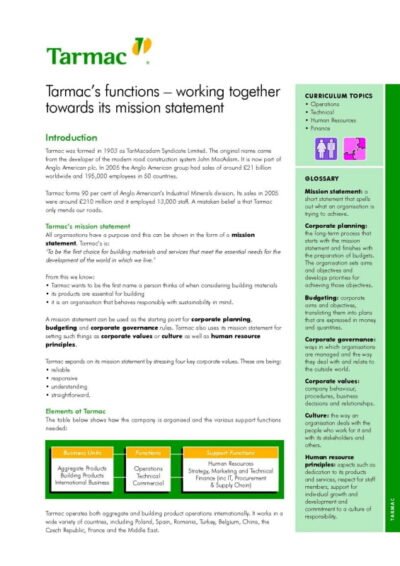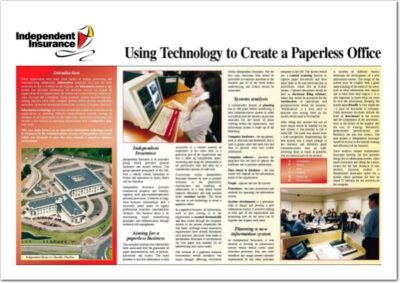Circular procurement is an innovative approach that seeks to integrate the principles of the circular economy into the procurement process. Unlike traditional procurement, which often prioritises cost and efficiency, circular procurement focuses on sustainability, resource efficiency, and the minimisation of waste. This paradigm shift is driven by the recognition that the linear model of “take, make, dispose” is no longer viable in a world facing significant environmental challenges, such as climate change, resource depletion, and biodiversity loss.
Circular procurement encourages organisations to consider the entire lifecycle of products and services, from design and production to use and end-of-life management. At its core, circular procurement aims to create a closed-loop system where resources are reused, refurbished, remanufactured, or recycled. This approach not only reduces the environmental impact of procurement activities but also fosters innovation and collaboration among stakeholders.
By prioritising products that are designed for longevity and ease of disassembly, organisations can significantly reduce their reliance on virgin materials and minimise waste. Furthermore, circular procurement encourages businesses to engage with suppliers who share similar sustainability values, thereby creating a more resilient and responsible supply chain.
Summary
- Circular procurement is a sustainable approach to purchasing goods and services that focuses on reducing waste and promoting the reuse and recycling of materials.
- The principles of circular procurement include prioritising the use of renewable and recyclable materials, extending the lifespan of products, and promoting sustainable production and consumption.
- The benefits of circular procurement include cost savings, reduced environmental impact, and the creation of new business opportunities and job growth in the circular economy.
- Implementing circular procurement in business involves assessing current procurement practices, setting clear goals and targets, and collaborating with suppliers and stakeholders to promote circularity.
- Circular procurement in government and the public sector can drive innovation, support local economies, and demonstrate leadership in sustainable procurement practices.
The Principles of Circular Procurement
The principles of circular procurement are grounded in the broader framework of the circular economy, which emphasises sustainability, resilience, and regeneration. One of the fundamental principles is the prioritisation of resource efficiency. This involves selecting products and services that use fewer resources throughout their lifecycle, thereby reducing environmental impact.
For instance, organisations may opt for energy-efficient appliances or materials sourced from recycled content. By making informed choices based on resource efficiency, businesses can significantly lower their carbon footprint while also achieving cost savings over time. Another key principle is the emphasis on product longevity and durability.
Circular procurement encourages organisations to invest in high-quality products that are designed to last longer and withstand wear and tear. This not only reduces the frequency of replacements but also diminishes the overall demand for new resources. Additionally, organisations are encouraged to consider the potential for repair and refurbishment when selecting products.
By choosing items that can be easily repaired or upgraded, businesses can extend their useful life and reduce waste generation.
The Benefits of Circular Procurement

The benefits of circular procurement extend beyond environmental sustainability; they also encompass economic advantages and enhanced brand reputation. One of the most significant economic benefits is cost savings. By investing in durable products and efficient processes, organisations can reduce their operational costs over time.
For example, a company that opts for energy-efficient machinery may experience lower energy bills and reduced maintenance costs, leading to substantial savings in the long run. Moreover, circular procurement can enhance a company’s brand reputation and customer loyalty. As consumers become increasingly aware of environmental issues, they are more likely to support businesses that demonstrate a commitment to sustainability.
By adopting circular procurement practices, companies can differentiate themselves in a crowded marketplace and attract environmentally conscious customers. This not only fosters customer loyalty but can also lead to increased sales as consumers actively seek out sustainable options.
Implementing Circular Procurement in Business
Implementing circular procurement within a business requires a strategic approach that involves multiple stakeholders across the organisation. The first step is to conduct a thorough assessment of current procurement practices to identify areas where circular principles can be integrated. This may involve analysing supply chains, evaluating product lifecycles, and assessing waste management practices.
By understanding existing processes, organisations can pinpoint opportunities for improvement and set clear objectives for their circular procurement initiatives. Engaging suppliers is another critical aspect of successful implementation. Businesses should seek to collaborate with suppliers who share their commitment to sustainability and circularity.
This may involve establishing partnerships with manufacturers that prioritise eco-design or those that offer take-back schemes for end-of-life products. Additionally, organisations can provide training and resources to their procurement teams to ensure they are equipped with the knowledge and skills necessary to make informed decisions aligned with circular principles.
Circular Procurement in Government and Public Sector
The public sector plays a pivotal role in advancing circular procurement practices due to its significant purchasing power and influence over market trends. Governments can lead by example by integrating circular principles into their procurement policies and practices. This not only demonstrates a commitment to sustainability but also sets a precedent for private sector organisations to follow suit.
For instance, many governments have begun to adopt green public procurement (GPP) policies that prioritise environmentally friendly products and services. In addition to policy development, public sector organisations can leverage their purchasing power to stimulate demand for circular products and services. By specifying circular criteria in tenders and contracts, governments can encourage suppliers to innovate and develop sustainable solutions.
Furthermore, public sector initiatives can foster collaboration among various stakeholders, including businesses, non-profits, and academia, to drive research and development in circular economy practices.
Circular Procurement in Supply Chain Management

Circular procurement is intricately linked to supply chain management, as it requires a holistic approach that considers the entire supply chain ecosystem. To effectively implement circular procurement practices, organisations must engage with suppliers at every stage of the supply chain—from raw material extraction to product delivery. This collaborative approach ensures that all stakeholders are aligned with circular principles and working towards common sustainability goals.
One effective strategy for integrating circularity into supply chain management is through the adoption of closed-loop supply chains. In this model, products are designed with end-of-life considerations in mind, allowing for easy disassembly and recycling. For example, companies like Interface have successfully implemented closed-loop systems by reclaiming used carpet tiles and recycling them into new products.
This not only reduces waste but also creates a sustainable source of raw materials for future production.
Challenges and Opportunities in Circular Procurement
While the transition to circular procurement presents numerous opportunities for businesses and governments alike, it is not without its challenges. One significant barrier is the lack of awareness and understanding of circular principles among stakeholders. Many organisations may be hesitant to adopt new practices due to uncertainty about their effectiveness or potential costs.
To overcome this challenge, it is essential to provide education and training on the benefits of circular procurement and showcase successful case studies that demonstrate its viability. Another challenge lies in the complexity of measuring the impact of circular procurement initiatives. Traditional metrics may not adequately capture the benefits associated with circular practices, making it difficult for organisations to justify investments in sustainability initiatives.
Developing new metrics that account for environmental impact, resource efficiency, and social benefits will be crucial in enabling businesses to assess their progress towards circularity effectively.
Case Studies of Successful Circular Procurement Initiatives
Several organisations have successfully implemented circular procurement initiatives that serve as inspiring examples for others looking to make the transition. One notable case is Philips, which has embraced a circular economy model by offering lighting as a service rather than selling light bulbs outright. This innovative approach allows Philips to retain ownership of its products while ensuring they are maintained and eventually recycled at the end of their lifecycle.
By shifting from a transactional model to a service-based one, Philips has reduced waste while providing customers with energy-efficient lighting solutions. Another compelling example comes from Unilever, which has committed to sourcing 100% of its agricultural raw materials sustainably by 2025. The company has implemented various initiatives aimed at promoting regenerative agriculture practices among its suppliers.
By investing in sustainable sourcing methods and collaborating with farmers, Unilever not only enhances its supply chain resilience but also contributes positively to local ecosystems. These case studies illustrate how organisations can successfully navigate the complexities of circular procurement while reaping significant environmental and economic benefits. As more businesses recognise the importance of sustainability in their operations, the adoption of circular procurement practices will likely continue to grow, paving the way for a more sustainable future.
Circular procurement is a sustainable approach to purchasing goods and services that focuses on reducing waste and promoting the reuse and recycling of materials. This method not only benefits the environment but also helps businesses save money in the long run. In a related article on steps you can take to grow your business, it discusses how implementing circular procurement practices can contribute to the overall growth and success of a company. By adopting a more sustainable approach to procurement, businesses can attract environmentally conscious customers and improve their reputation in the market.
FAQs
What is Circular Procurement?
Circular procurement is a process where organizations aim to purchase goods and services that are designed to be reused, refurbished, remanufactured, or recycled at the end of their life cycle. This approach aims to minimize waste and maximize the value of products and materials.
What are the benefits of Circular Procurement?
Circular procurement can help reduce the environmental impact of products and services, minimize resource depletion, and promote a more sustainable economy. It can also lead to cost savings, improved resource efficiency, and reduced waste generation.
How does Circular Procurement differ from traditional procurement?
Traditional procurement focuses on purchasing goods and services with a linear approach, where products are used and then disposed of. Circular procurement, on the other hand, aims to create a closed-loop system where products and materials are reused or recycled, reducing the need for new resources.
What are some examples of Circular Procurement practices?
Examples of circular procurement practices include purchasing products made from recycled materials, leasing or renting products instead of buying them outright, and procuring goods that are designed for easy disassembly and recycling.
How can organizations implement Circular Procurement?
Organizations can implement circular procurement by setting specific sustainability criteria for their procurement processes, engaging with suppliers who offer circular products and services, and incorporating circularity principles into their procurement policies and practices.
 Tarmac's functions - working together towards its mission statement (PDF)
Tarmac's functions - working together towards its mission statement (PDF)  Using technology to create a paperless office (PDF)
Using technology to create a paperless office (PDF) 